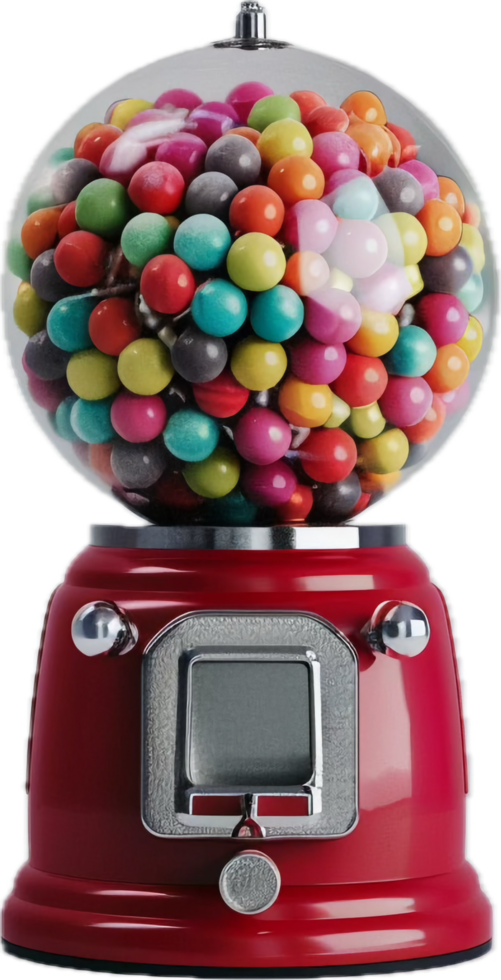Who has never heard “email marketing is dead”? Well, well, well! With over 90% of people checking their email every day, at least once a day, there’s no funeral planned for a while…
Let’s face it, most of us even check our email several times and leave our mailboxes open continuously.
We agree, we don’t spend our time reading only promotional, transactional or automated emails.
Work emails still take precedence – phew! Nevertheless, we scan all emails quickly at least…
And that’s everywhere in the world! On average, almost a quarter of the emails received are opened. For some countries, it’s more than a third! Here are some stats that highlight these trends by location.
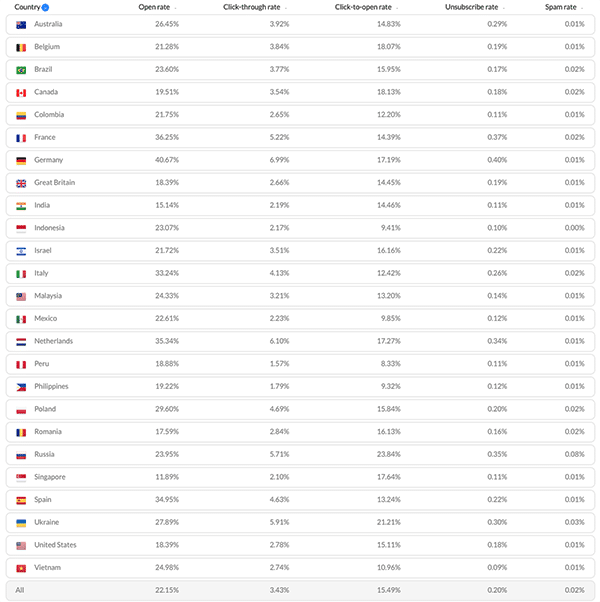
Email is not dead and is producing undeniable results. In a few figures (source: https://backlinko.com/email-marketing-stats):
- Email marketing generates an ROI of $44 for every $1 spent (globally, all industries combined)
- 59% of B2B marketers cite email campaigns as the most profitable communication channel
- 79% of B2B marketers consider email to be the most effective medium for delivering their content
- Email marketing is 40x more effective at acquiring new customers than Facebook and Twitter combined
More than 350 billion emails are expected to be sent every day with 4.3 billion users by 2023 (more than half of the world’s population!).
But how can we be heard/read in the midst of this hubbub? What can we do to optimize our emails so that they don’t go directly into the “forgotten”, “junk” or even “spam” category?

We explain in this article how to stand out from the crowd with Marketo emails and our tips!
It all starts with an email template
Developing infinitely reusable templates for multiple campaigns, with common and easily identifiable elements such as your logo and content areas, has become the norm.
We can’t stop listing the advantages of working in 2 steps – template and emails – :
- Save time in the construction of your email campaigns
- Guaranteed compliance with your graphic charter. Impossible for the operational marketing teams to “go off the beaten track” of the charter, and insert unicorns! (even though I love unicorns!)
- Clear and identifiable structuring of the content zones, making them easier to read and remember
- No need for advanced technical skills, thus increasing the autonomy of marketing teams
By keeping a coherent style, tone and “look and feel”, it will make your communications easily identifiable by your readers.
We say that your email should be an extension of your website, where the elements of the brand identity as well as the graphic charter are found.
It’s almost like a kind of syllogism where our brain validates the email we receive because something similar has already been offered before. It knows, so it trusts, so it opens and reads.
Block logic
Marketo keeps the logic of modules/blocks already used for the landing pages and their templates.
These modules are made to be fully responsive, integrated and aesthetically articulated between them.
The modules are coded in the templates and then available in the email editor within a list of modules.
Marketo makes it easy for us by using the “pick, drag and drop” technique.
Free Marketo email templates at your disposal!
As for the landing pages, Marketo provides a library of email templates that are already directly accessible from the platform.
In fact, for any email creation, we go through this library – the Template Picker – and we have 3 options :
- an empty email
- a template proposed by Marketo
- a template that we have built beforehand
A piece of cake!
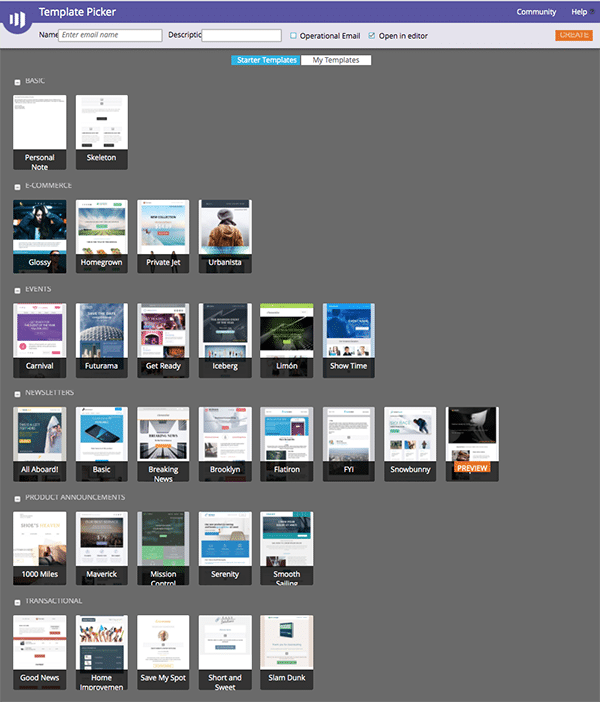
Construire son propre Marketo email template
You can create your own templates in 2 ways:
- by using an email from an existing template and just adapting the content without changing the skeleton
- by developing a new template in HMTL from scratch and incorporating the syntax elements of Marketo to make the reuse possible
For non-coders
Marketo aims to make marketers autonomous without having to rely on their creative or development team.
Also, it is possible to create your own templates simply by defining as a model an email you have worked on – from Marketo email templates for example.
Pour les adeptes de HTML
When developing the template in HTML, it will be necessary to integrate the elements of the Marketo syntax that will allow the modules to be put in place. Without this, we would be depriving ourselves of one of the key features of Marketo that offers flexibility, adaptability and efficiency.
M/L’s little tip: even if you have several templates, a master email template should be kept in order to keep the original HTML of the email and its modules. Without ever using it, it would remain the absolute reference template to which you can refer to test the creation of new templates.
Good practice: think A/B tests
When you design your email template, you will need to specify all the variable elements.
An example below:
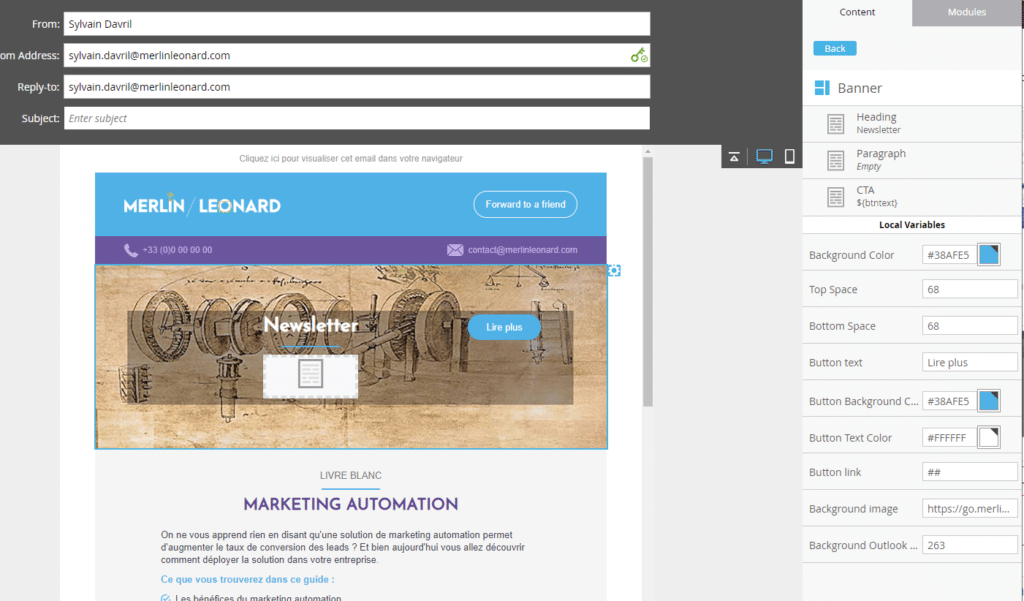
marketo email variables
We have planned to be able to modify :
- the space at the top and bottom of the title block,
- as well as the color of the button
to send different versions of the same email, as part of an A/B testing. It is necessary to think beforehand about the tests that we want to do to include them in the template parameters.
Then the construction of the Marketo email
Modules
With the migration to the V 2.0 editor a few years ago, Marketo has raised the bar in terms of user-friendly ergonomics and especially with the introduction of modules.
These modules are modeled sections defined in the template that are used to build the email from the email editor.
As these blocks are coded in the template script upstream, they are easy to edit, organize, structure and even hide as needed.
They integrate with the rest of your email content with harmony and fluidity, in a fully responsive way.
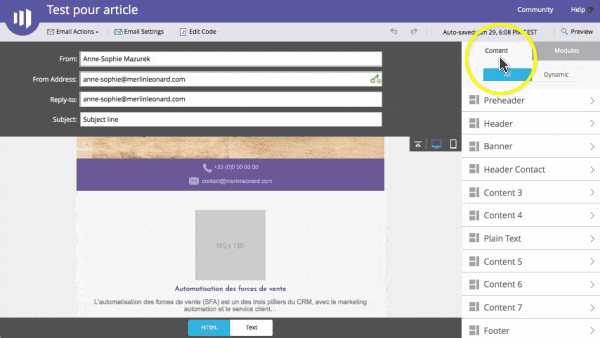
Marketo email template logic
The personalization
Who hasn’t received an email with a botched personalization? “Dear {Firstname}”? Almost unconsciously our brain will immediately be in “attention spam” mode and we are not in the best dispositions to read the rest.
Thetokens
Personalization is mostly done through the use of tokens. These variables refer to personal and company fields and attributes attached to someone in your Marketo database – and also in your CRM for some variables -.
Here are some examples of standard tokens that will allow you to create a superior experience for your readers – external or internal – :
- {{lead.Acquisition Date}}
- {{lead.Email Address}}
- {{lead.First Name}}
- {{lead.Unsubscribed}}
- {{Company.Company Name}}
- {{Company.Industry}}
- {{system.viewAsWebpageLink}}
- {{trigger.Trigger Name}}
- {{program.Description}}
- {{trigger.Visit Web Page}}
- and so on…
E
nd then, Marketo allows you to use your own tokens in association with the custom fields you have created according to your specific needs. Clever! But also “email tokens” that will apply exclusively to a program (or group of programs).
This is particularly useful when you build programs that you use on a recurring basis. It is very efficient and saves time. Boom!
By the way, we regularly deal with this subject in our Marketo tips. A simple and efficient format, so why deprive yourself?
This video is a quick overview of the main personalization options in Marketo Email. Enjoy!
Calculated fields
There is another level of customization directly in the “Field Management” of the Admin part of Marketo.
In fact, you can create calculated fields that, by definition, contain automated calculations on values resulting from the concatenation of other fields or conditional operations.
They can be very useful in emails as shown in the example below.

Some best practices for Marketo email
As the digital world changes every day, email marketing is also largely impacted by technological evolutions and legislative changes.
This leads today’s marketers to anticipate, act and react quickly.
Marketing automation platforms like Marketo are there to accompany us in this maze, making the construction of email campaigns more and more efficient and agile.
But that’s not all… And often the intervention and support of specialized teams like Merlin/Leonard can take it to the next level.
So don’t hesitate! I’ve put together a little cocktail of best practices to boost your emails.
Images & GIFs
The impact of messaging
Some messengers like Outlook systematically block images, especially in large companies. It is therefore crucial to keep this in mind when building your emails.
One of the undeniable assets of Marketo is that the platform allows from its email editor to quickly and easily access the tools that will allow to anticipate this challenge.
- Insert the link “view on your browser”. Marketo makes it easy for us here because we just have to select the option in the editor. We can also set this link in the admin area so that it applies to all emails without having to think about it every time.
- Do not forget the alternative text for your images. Describe explicitly and succinctly what the image is to make the reader want to download it if the email blocks it. It is easy to edit the tags in the editor when you select the image for the email
- Think about the html version and the plain text version. It is important not to forget to take care of the text version.
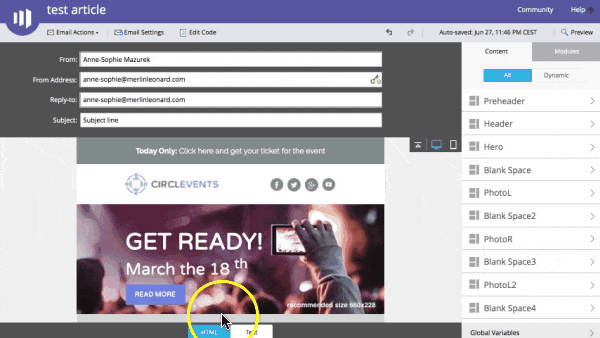
The size of the images
Emails that are too large can be systematically blocked.
It is therefore important to reduce the size of emails so that they remain around 100kb (maximum recommended weight), without compromising your design.
This should not be at the expense of the perceived quality of the email or the message.
Different images depending on the support (mobile vs desktop)
Yes it is possible and yes it is a good practice nowadays. 42.3% of people automatically delete an email without making the effort to read it if it is not optimized for a mobile screen.
It’s almost self-sabotage not to do everything to make your email look as good on big screens as it does on small ones!
Sometimes the “hero” image chosen for your campaign does not render well in mobile format.
This is often the case for landscape images whose rendering is disastrous.
A solution will be to code a piece of script in the template directly to allow the module to have the fields to fill in the image for mobile and desktop.
Thesubject-lines
The subject line of your email is one of the first things the reader sees. And as they say, you only get one chance to make a good first impression!
You might as well say that taking care of your subject lines is mandatory! Without falling into counter psychology, the goal here is to find the right words, the formulation that will hit the nail on the head so that your reader opens your email. Easier said than done!
However, there are a number of rather effective recommendations that are worth following. Here are 10 that I think are essential.
- Keep it short & sweet: subject lines of 6 to 10 words have the best open rate (source: Marketing Land). In fact, most smartphones only display 5 or 6 words in the subject line of an email.
- Use personalization. Emails with personalized subject lines have a 26% higher open rate (source: Campaign Monitor).
- Vary your subject lines. They should not be identical and banal.
- Invite the recipient to exchange, to have a conversation. “Customer-centric” is the key word to keep in mind.
- Do not promise the moon. This will do you a disservice in the end…
- Do not harass your recipient. Quantify the right number of emails to send for your business.
- Present a clear solution to their problem.
- Use the numbers wisely and sparingly.
- Don’t be too pushy. This is not a flea market.
- Test, test, test!
The “pre-header”
Marketo allows you to have control over the pre-header that will be displayed below the subject line.
By default, it is the first line of the email that is displayed, but you don’t want this line which is generally not relevant.

Marketo preheader
What we have done recently for our clients
Email template design

For some products, the visual identity is essential. It is a matter of finding the right balance between the quantity of text and images. Some tricks like creating triptychs in the same image allow to minimize the size and the number of images.
Integration of Marketo email templates
Many of our clients already have an agency that they have worked with for a long time.
The agency produces the source template (Indesign, Photoshop..) and we integrate it into Marketo, and add the customization layer allowing our client to be autonomous.
Emails withVelocity script
Marketo offers some nice advanced personalization options that go beyond the insertion of tokens.
In fact, you can use email scripting with Velocity to get information on custom objects, for example. This takes personalization to a new level, with details beyond just the first name.
For example, in the email below, we can find out how many boats the customer owns, and then use the information about the different boats in the email.
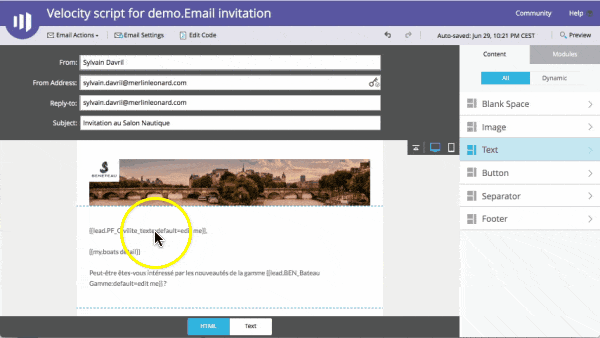
Of course this article could go on and on as the features of Marketo are so vast.
Also, the Merlin/Leonard team is at your disposal to put magic in your emails and email templates to make you shine among all these messages that we receive daily.
From strategy to template and email creation to coaching on best practices and DOs & DON’Ts in terms of email marketing, the Merlin/Leonard experts will be delighted to share some of their genius with you.




